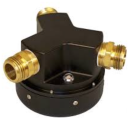The following is the procedure to upgrade the firmware of a RT130. The upgrade is applied to the RT130 from a firmware file which is copied to CF card and inserted to the RT130 before it is powered on.
NOTE: For EPIC RT130 dataloggers, please contact us before changing the firmware, we may not support all versions. Thank you.
2013-04-02: We are updating to RT130 firmware version 3.4.3. This update will not be made in the field as it includes reprogramming chips from several boards. Please contact us for further information.
1.
Obtain a copy of the new firmware. EPIC will supply this.








